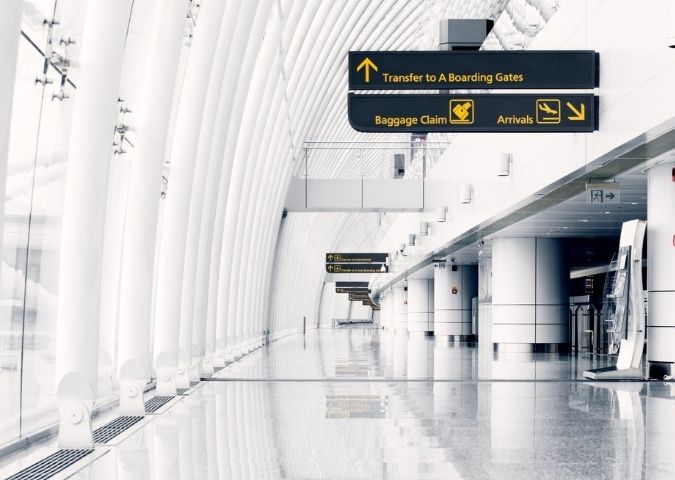Vietnam
For a trip to Vietnam, you need a valid visa. Which type is suitable for your travel plans and whether you can also enter Vietnam with an E-Visa depends on a number of factors. We support you in applying for your electronic travel authorization for Vietnam.
Country facts
Have you planned a vacation in Vietnam? Then take a few minutes to inform yourself about the most important Vietnam facts before you relax on sunny dream beaches or explore the bustling streets of Hanoi and Ho Chi Minh City.
Quick facts Vietnam
- Location: Southeast Asia
- Area: 331,690 km²
- Currency: Vietnam Dong (VND)
- Official language: Vietnamese
- Population: approx. 96.5 million
- Capital: Hanoi
Climate in Vietnam
Vietnam lies partly in a tropical and partly in a moderate climate zone. However, the entire national territory is at times strongly influenced by monsoons, which occur mainly between May and October and bring heavy rainfall, tropical storms, and typhoons.
Warm to hot temperatures prevail throughout the whole year. In the north, average temperatures range between 22 °C and 27 °C in summer and between 15 °C and 20 °C in winter. In the southern part, they even lie between 29 °C in summer and 27 °C in winter.
Landscape and nature in Vietnam
Vietnam is located in the east of the Indochinese peninsula and is dominated by its more than 3,400 km long coastline. The mainly hilly landscape is largely covered by dense tropical forests. The north around the capital Hanoi is characterized by the fertile delta of the Red River and the southernmost region near Ho Chi Minh City by the Mekong Delta.
The fauna and flora in Vietnam are extremely rich in species: the tropical rainforests of Southeast Asia are home to rare species such as tigers, elephants, Java rhinos, but also langurs, macaques, Malayan bears, creeping cat species, cantchiles, deer, as well as numerous species of bats and rodents, and many more.
Entering Vietnam
You will need an E-Visa or visa to enter Vietnam. Also, always keep up to date with the latest entry requirements for Vietnam.
Getting around Vietnam
The road and rail networks, as well as domestic air transport in Vietnam, are relatively well developed. Also, tour buses are available to transport you between various towns. Cabs can be used to get around within the larger cities.
You can also rent a car or a motorcycle, but you must be prepared to deal with the sometimes adventurous driving style of the Vietnamese. The traffic accident rate in Vietnam is well above average.
Attention
In Vietnam, there is a strict alcohol limit of 0 per mille. This also applies to cyclists.
Means of payment in Vietnam
In the cities, payment by credit card is possible in many places, and ATMs are also available in sufficient numbers. If you are staying in rural areas, however, you should always carry enough cash with you.
Travel and safety tips for Vietnam
The security situation in the country can change at short notice. Always keep up to date with current events and weather forecasts during your trip.
Best travel time for Vietnam
When traveling to Vietnam, you should consider the climate in the different regions. The mild and dry winter months are ideal for a trip through Northern Vietnam. Only higher mountainous areas can get relatively cold during this time. The tropical South of Vietnam is also best visited from December to April. Rather unfavorable are the months of May to September, when temperatures and humidity are high during the rainy season.
Health information for Vietnam
No vaccination certificates are required for entry to Vietnam. However, the following travel vaccinations are recommended:
- Hepatitis A
- Hepatitis B
- Dengue-Fieber
- Typhus
- Tollwut
- Japanische Enzephalitis
Prevent diarrhea by using bottled water for drinking, cooking, washing dishes, and brushing your teeth whenever possible, and protect your food from flies.
Attractions in Vietnam
No Vietnam vacation is complete without a kayak trip to the world-famous rock formations of Halong Bay, which were added to UNESCO's World Heritage List in 1994. Fringed by lush green rice terraces, the 30 km-long Mu Cang Chai mountain pass is a real feast for the eyes and is best explored on a trekking tour lasting several days.
The golden pedestrian bridge in Đà Nẵn Cầu Vàng, which is carried by two gigantic stone hands, is a spectacular photo motif that should not be missing from your Instagram channel. You can immerse yourself in culture in the former imperial city of Huế, which attracts visitors with the huge imperial palace complex and a lively pedestrian zone full of street performers, bars, and clubs.

